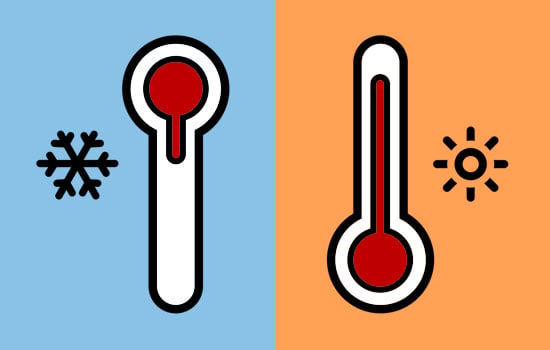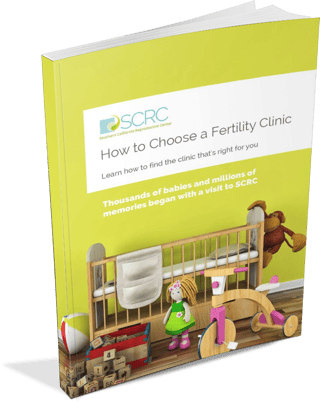
Embryo transfer is the final step of the IVF process, where the embryos which were fertilized in the laboratory are placed into your uterus by your doctor. It is a very quick and simple procedure, which doesn’t require anesthetic, and for many patients it is the most exciting and hopeful moment in what can be a long and demanding process. Either fresh or frozen embryos may be transferred, and you may be wondering which option is best for you. There are some significant differences, and you may be surprised to learn that using previously frozen embryos may offer a higher chance of success for some women. Let us walk you through the pros and cons of both approaches.
What is fresh embryo transfer?
A fresh embryo transfer follows your IVF cycle of ovarian stimulation and happens very soon after your initial egg retrieval procedure. Transfer can occur one to six days after successful fertilization. These days, most clinics are allowing the embryo to reach the blastocyst stage before transferring: this is usually on day five or six.
Pros and cons of fresh transfer:
Every patient is different, and only you and your doctor can decide which approach is best, but these are some things to keep in mind as you consider the options:
- Pro: Shorter overall process to get pregnant (if successful). For many women, especially those who have been waiting a long time to get pregnant, the main pro is that fresh embryo transfer happens right after IVF egg retrieval. It is less time to wait and worry, and if the transfer results in implantation and a successful pregnancy, it means less time before you have your baby in your arms.
- Con: Hormone levels may rise during ovarian stimulation. All of the medications and hormones that you took in order to help more of your eggs mature during the IVF cycle may mean that higher-than-normal levels of those fertility hormones are still in your system at the time of the transfer. This may sound like good news, but it may actually make it more difficult for an embryo to implant.
- Con: Uterine lining may be less receptive to embryo implantation. There is some recent evidence which suggests that high levels of estrogen may be associated with reduced uterine receptivity. This means that the lining of your womb may not be in an optimal state for implantation, making it more difficult for an embryo to attach.
What is frozen embryo transfer?
Also known as FET, the term actually refers to the use of thawed embryos that were frozen in a previous IVF cycle.Pros and cons of frozen transfer:
Sometimes FET is used in later transfers when there are “extra” embryos from an earlier cycle, but increasingly it is becoming a preferred option even for first transfers. Here are some points to discuss with your doctor:
- Pro: Preventing/eliminating late-onset ovarian hyperstimulation syndrome (OHSS). Occasionally, women will have an elevated risk of developing OHSS after egg retrieval and transfer. After the stimulation of your ovaries during your IVF cycle, the addition of human chorionic gonadotropin (hCG) from the pregnancy can trigger OHSS. Though it is usually mild, OHSS causes cysts and the release of large amounts of hormones, including estrogens, progesterone, and local cytokines. Swelling and discomfort are typical in mild cases, while rare severe cases can be dangerous for you and your baby. FET allows us to separate the transfer from the stress of ovarian stimulation, reducing or even eliminating the chance of OHSS.
- Pro: Uterine lining may be more receptive to embryo implantation. Giving your body time to recover from the IVF stimulation cycle and the egg retrieval procedure could mean that the endometrial lining in your womb will be a more ideal environment for implantation to occur.
- Pro: Allowing time for sophisticated genetic test results. If you would like to use preimplantation genetic diagnosis (PGD) or screening (PGS) tests to help ensure that the healthiest embryo is selected for transfer, FET gives the lab time to process the tests and give you time to process the results.
- Pro: Babies born from frozen embryos may have better health outcomes. Studies have shown that FET babies are less likely to be linked to low birth weight and may have a lower chance of being small for their gestational age
- Con: Need to return to clinic after 30 days following egg retrieval for FET. If you are having to take time off of work to attend appointments, or if you need to travel to your clinic, an extra appointment can be an extra inconvenience.
- Con: Additional time to pregnancy. Even an IVF cycle with a fresh embryo transfer can feel endless to a hopeful patient who has been waiting a long time for a baby, so adding another month to the waiting time can seem excruciating.
- Con: Embryo may not survive freezing (or thawing) process. This is the biggest concern for most patients. While there is a chance of embryo loss, with the latest methods and best practices, there is now a survival rate of over 95%. Freezing techniques are a very important consideration, so make sure you know which one your clinic uses. Slow freeze, an older method, has a higher risk of injury or loss. Vitrification, which is a “flash freezing” process, allows embryos to be frozen almost instantly, which prevents most damage.
What about success rates?
These days, frozen embryo transfers have a 15% higher pregnancy rate. This was not always the case, but huge improvements in freezing and storage techniques have closed the gap.
Understanding the pros and cons of both types of transfer should help you feel more prepared when you sit down to discuss your options with your fertility specialist. Whether you and your doctor choose to do a fresh embryo transfer or FET, it is an important milestone in your fertility journey, and we wish you the very best.
Share this on social media:




